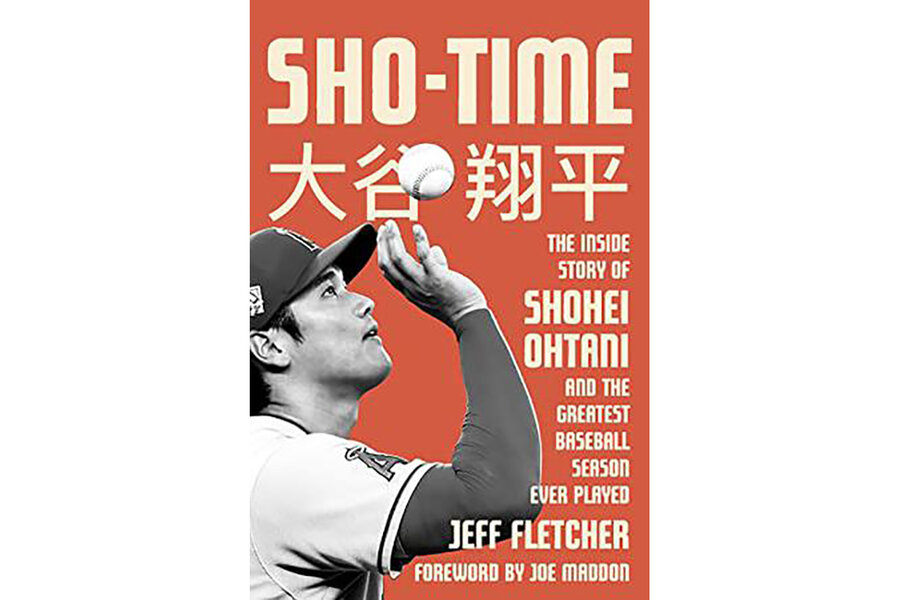The best thing since Babe Ruth? How Shohei Ohtani is making history.
Loading...
Not since Babe Ruth has a baseball player been able to pitch and hit at an elite level in the major leagues. Not until Shohei Ohtani, that is.
He was a star in his native Japan, playing for Hokkaido Nippon-Ham Fighters before crossing the Pacific to play for the Los Angeles Angels in 2018. Expectations for Ohtani were enormous, but after his promising start was sullied by injuries, no one thought he would come back to have a 2021 season for the record books.
Jeff Fletcher, the Los Angeles Angels beat writer for the Southern California News Group, examines Ohtani’s career thus far in “Sho-time: The Inside Story of Shohei Ohtani and the Greatest Baseball Season Ever Played.”
Ohtani is considered a “unicorn,” an athlete with a rare gift. At his best as a pitcher, he throws fastballs at over 100 mph. Offensively, he’s capable of crushing 470-foot home runs and stealing bases with ease. All this, and he’s only in his 20s. He’s a talent unlike anything the league has seen in the modern era.
Fletcher gives a brief history of Ohtani’s early life in Japan, taking note of the fierce love Ohtani has for the game and looking at the decisions that led to his leap to the American League. His reputation preceded him, partially thanks to a jaw-dropping viral 2016 YouTube video showing Ohtani smashing a home run through the roof of the Tokyo Dome.
“Sho-time” tells how Ohtani narrowed down the pool of suitors and surprised everyone by choosing the Angels, who were thrilled, since signing a two-way player is essentially getting two stars for the price of one. But they were also concerned about how much to use him, fearing injury.
“The Angels had treated Ohtani like a fragile artifact for most of his first three seasons in the big leagues,” Fletcher explains, “and you couldn’t blame them. It had been a century since anyone had been able to pitch and hit at a high level in the majors. Even when Babe Ruth did it in 1918 and 1919, he said the physical demands were too great.”
Their worry was justified. It would take two surgeries and extensive rehabilitation for Ohtani to fully return to the game after playing partial seasons in 2019 and 2020.
In the 2021 season, Ohtani silenced the whispers about his ability to be a two-way player by hitting a total of 46 home runs and as a pitcher allowing an average of 3.18 runs per game – astonishing figures, especially since he consistently played on the mound and at the plate in the same games. He was the silver lining of an otherwise lackluster season for the Angels, and his star power drew crowds.
The public is understandably curious about Ohtani’s inner world, but Fletcher’s book will do little to satisfy that desire. Ohtani’s quotes are primarily pulled from his scripted responses to the media. However, Joe Maddon, the manager of the Angels during the 2021 season, is quoted in the book’s foreword saying, “He does not like to lose. At the same time, he is humble, polite, and kind. There is an old-school component to him.”
That down-to-earth and hardworking nature sings through Fletcher’s book. Ohtani’s unfortunate 2019 and 2020 seasons demonstrate that not even legends-in-the-making are infallible. Perhaps even more than his raw talent, his drive to come back after his injuries is admirable.
It may seem premature to write a book about a player who’s still in the early years of his career. Fletcher guides readers along the signposts of Ohtani’s ascent with thoroughness and respect. “Sho-time” serves as a mile marker in what will likely be a prolific run. The writing falls short of bringing Ohtani’s electric game to life, but it communicates his uniqueness, which is sure to get readers excited about watching a once-in-a-lifetime talent play ball.








